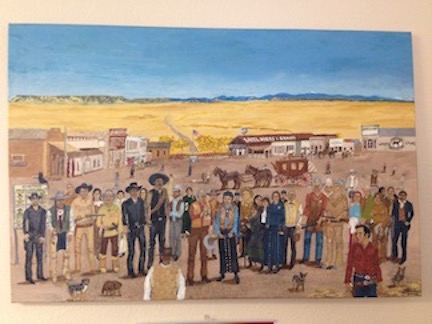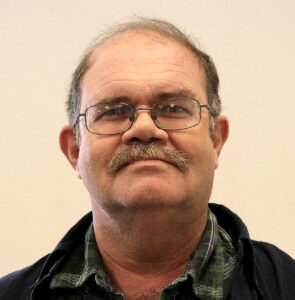You never know what you’ll find when you start cleaning out your computer of useless stuff. Sometimes it’s something great that was forgotten and that was the case when I found a Calavera poem by the late Jerry Padilla.
First, let me tell you about Jerry. I met him when I was hired in 2007 to be the copy editor for The Taos News in Taos, New Mexico. He was the editor and writer for El Crepúsculo, the paper’s Spanish section. Our desks were next to each other.
Jerry loved to talk, and I mean talk, about history, art, Spanish and Native culture, traditional music, and whether mythical creatures like Big Foot and El Chupacabra actually existed. (He believed they did.) He was also a stickler that we use proper accents when a Spanish word warranted it. I had to remind him, in a friendly way, that I had work to do. I didn’t want to hurt his feelings. He was a genuinely nice man and when the time warranted it, we had long conversations.
I later had to move my desk, for the above reason, which meant a short wall separated us. I was in the running for the top editor’s position, and the paper’s owner had given me three weeks to show what I could do. I was reaching deadline when Jerry’s head popped above the wall. That day two hikers in Georgia claimed they had found the frozen remains of Big Foot. Jerry was damn excited and thought we should do a story. (Our paper didn’t use wire stories.) I finally had to say, “Jerry, unless they found Big Foot in Taos, I don’t care.”) He was disappointed. Sadly for him, it was a hoax about Big Foot.
Jerry loved to draw and paint. My favorite is the painting he did of his co-workers in a Wild West setting, which I believe is Springer, New Mexico, where he once lived and hoped to retire. I am the sheriff holding a rifle and wearing a long skirt. I am talking with Ben Cartwright, a character from the old show Bonanza (Westerns were another Jerry obsession), part of a delightfully fabricated tale Jerry created. He painted our portraits from memory. When I left The Taos News in 2016, it hung on a wall outside my office.
Jerry retired in 2012 and unfortunately died six months later from the seizure disorder that had troubled him. He was 59. The last I saw him was the Tuesday before when he was turning in his column.
Now about the Calvera poem I found. The poems, which view death with irony, satire, and good humor, are traditionally written for Día de los Muertos, or Day of the Dead, which is two-day holiday starting Nov. 1. It was an honor if Jerry wrote one for you.
Here is mine, dated Oct. 29, 2007. In it Jerry eludes to my Portuguese heritage, my love of goats and my work at the newspaper.
Joan Livingston, se le fueron las cabras, adios
Por Jerry A. Padilla
“Pero, it’s my job to verify todo esto, all these,
Are you really, ¿who esto escribió?
“How dare you doubt me, your Comadre Sebastiana,
In my cart ride many from el Portugal.
“I’m sorry, perdón, sólo I must be losing my goats,
Te ayudo, my dear, to find them again,
Jump into my carreta, for an eternal ride we shall go,
Vamos, it’s time, my turn now, lost goats y todo,
Mi deadline you have met.
Here is the translation:
Joan Livingston, the goats left, bye
By Jerry A. Padilla
“But, it’s my job to verify all this, all these,
Are you really, who wrote this?
“How dare you doubt me, your Comadre Sebastiana,
In my cart ride many from Portugal.
“I’m sorry, sorry, only I must be losing my goats,
I help you, my dear, to find them again,
Jump into my cart, for an eternal ride we shall go,
Come on, it’s time, my turn now, lost goats and all,
My deadline you have met.


